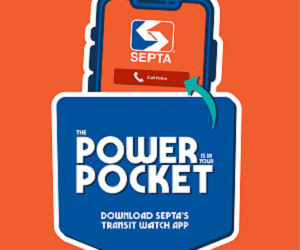
Driving the Economy
March 30, 2018

SEPTA drives the economy of Pennsylvania. The five counties of southeastern Pennsylvania generate 41 percent of the state's economic activity with 32 percent of its population on just five percent of its land. This degree of economic productivity and density is not possible without transit to efficiently move people throughout the region.
Every day, SEPTA's 2,800 trains, buses, trolleys, and paratransit vehicles provide 1.1 million trips across the region to work, school, appointments and entertainment. This transit service is the lifeblood of the regional economy. As one of the area's largest employers, SEPTA also supports the economy as a jobs provider and purchaser of goods and services to keep the system running. When the PA State Legislature passed Act 89, SEPTA was ready to efficiently invest the new capital dollars in long-needed maintenance, state of good repair capital refurbishments, and replacement of vehicles. SEPTA is now four years into a 20-year capital program. The program addresses this backlog and creates the opportunity to consider much needed expansion to meet the needs of a growing region.
SEPTA's Act 89-funded capital investment program is having a substantial impact on the regional economy, up 71 percent compared with pre-Act 89 levels. In Bucks County, the total value of this economic activity averages $82 million per year, supporting 560 jobs, $31 million in worker earnings, and associated tax revenues. In Chester County, the total value of this economic activity averages $78 million per year, supporting 530 jobs, $30 million in worker earnings, and associated tax revenues. In Delaware County, the total value of this economic activity averages $154 million per year, supporting 1,140 jobs, $64 million in worker earnings, and associated tax revenues. In Montgomery County, the total value of this economic activity averages $145 million per year, supporting 1,000 jobs, $56 million in worker earnings, and associated tax revenues. In the City of Philadelphia, the total value of this economic activity averages $265 million per year, supporting 1,900 jobs, $107 million in worker earnings, and associated tax revenues.
Did you know access to rail transit increases property values? Models allow economists to isolate this value through analysis of home sales. On average, suburban residential property values in southeastern Pennsylvania are 7.4 percent higher, totaling $14.5 billion in added home value associated with SEPTA's Regional Rail & Norristown High Speed Line. The economic model used to quantify suburban property value impacts does not translate directly to the City of Philadelphia because SEPTA's service is too comprehensive to isolate its impact. A new model is being developed to quantify City property value impacts.

The City of Philadelphia's accelerating growth has been built and will continue to depend on access to SEPTA's expansive rail network. The 30th Street District Plan, for example, calls for millions of square feet of new transit-oriented development housing tens of thousands of new workers and residents. SEPTA's service at 30th Street Station - including 13 Regional Rail lines, the Market-Frankford Line, five trolley lines, and nine bus routes - will be the workhorse that allows this vision to achieve its full potential.
Click here to learn more about the SEPTA 2018 Economic Impact Report.



